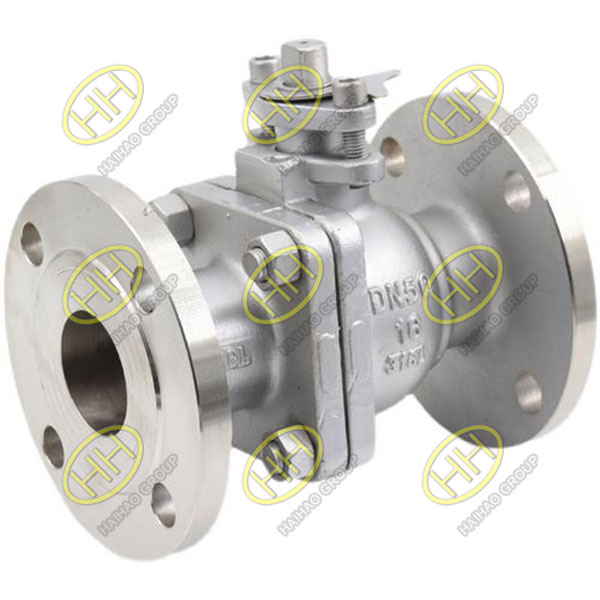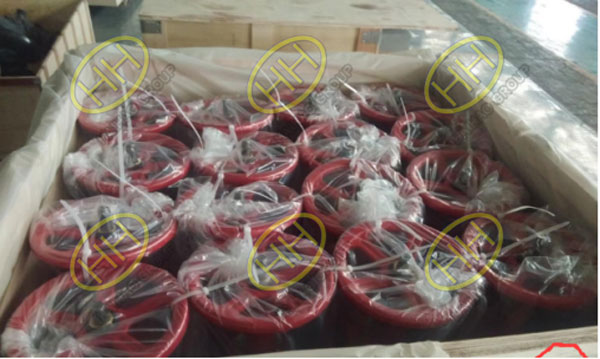Causes and prevention of valve cavitation
Over time, valves in piping systems can degrade, leading to cavitation—a phenomenon that causes significant damage to the system. Cavitation typically results from vibration and noise, accelerating the corrosion process. This issue occurs when high noise levels and large amplitude vibrations generate bubbles near the valve, particularly downstream, where they form and collapse. While cavitation is commonly seen in ball and rotary valves, it can also occur in wafer-style control valves and downstream piping, especially in butterfly valves. Cavitation can cause leakage in the valve’s piping and welded repair areas, rendering the valve unsuitable for the pipeline section.
Cavitation can cause extensive damage, whether it occurs inside the valve or downstream. Equipment in the cavitation zone is highly susceptible to damage. Thin diaphragms, springs, and small-section cantilever structures are prone to oscillation failures due to high-amplitude vibrations. Frequent failure points include instruments such as pressure gauges, transmitters, thermocouple wells, flow meters, and sampling systems. Actuators, positioners, and limit switches containing springs are subject to accelerated wear. Additionally, mounting brackets, fasteners, and connectors may loosen and fail due to vibration.
Fretting corrosion, which occurs when vibrating surfaces rub against each other, is common near cavitating valves. This process produces hard oxides that act as abrasive particles, accelerating wear between surfaces. Affected equipment includes isolation and check valves, as well as control valves, pumps, rotating screens, samplers, and other rotating or sliding mechanisms.
High-amplitude vibrations can also cause metal valve parts and pipe walls to crack and corrode. Dislodged metal particles or corrosive chemicals can contaminate the pipeline medium, posing significant risks to sanitary-grade valve pipelines and high-purity pipeline media, which is unacceptable in many applications.
Predicting cavitation damage in plug valves is complex and cannot be simply calculated by flow resistance pressure drops. Experience shows that localized vaporization and steam bubble collapse may occur in areas where the main liquid flow pressure drops to the liquid’s vapor pressure. Some valve manufacturers predict the onset of cavitation damage by defining an initial damage pressure drop. One method to predict cavitation damage is based on the fact that steam bubble collapse causes cavitation and noise. Manufacturers have determined that if calculated noise levels are below the following limits, significant cavitation damage can be avoided:
Valve sizes up to 3 inches: 80 dB
Valve sizes 4-6 inches: 85 dB
Valve sizes 8-14 inches: 90 dB
Valve sizes 16 inches and larger: 95 dB
Methods to Eliminate Cavitation Damage
To eliminate cavitation, special valve designs are used, incorporating flow division and staged pressure drops:
Flow Division: This approach involves dividing a large flow into several smaller flows, with the valve flow path designed to direct flow through multiple parallel small openings. The size of cavitation bubbles is partly determined by the size of the openings. Smaller openings produce smaller bubbles, resulting in less noise and less damage.
Staged Pressure Drops: This method designs the valve with two or more control points in series, allowing the pressure drop to occur in several smaller steps rather than in a single step. Smaller individual pressure drops prevent the flow’s pressure from dropping below the liquid’s vapor pressure, thereby eliminating cavitation.
Combining flow division and staged pressure drops within the same valve can significantly improve cavitation resistance. Additionally, repositioning the control valve so that the inlet pressure is higher (e.g., further upstream or at a lower elevation) can sometimes eliminate cavitation issues.
Moreover, positioning the control valve where the liquid temperature and, therefore, vapor pressure is lower (e.g., on the cold side of a heat exchanger) can help eliminate cavitation.
Valve cavitation is not just a problem that degrades performance and damages valves; downstream piping and equipment are also at risk. Predicting cavitation and taking measures to eliminate it is the only way to avoid costly valve maintenance and replacement.
Related article:
Haihao Group excellent valve manufacturing and quality control
Comprehensive analysis of pressure piping component type testing for general valves


